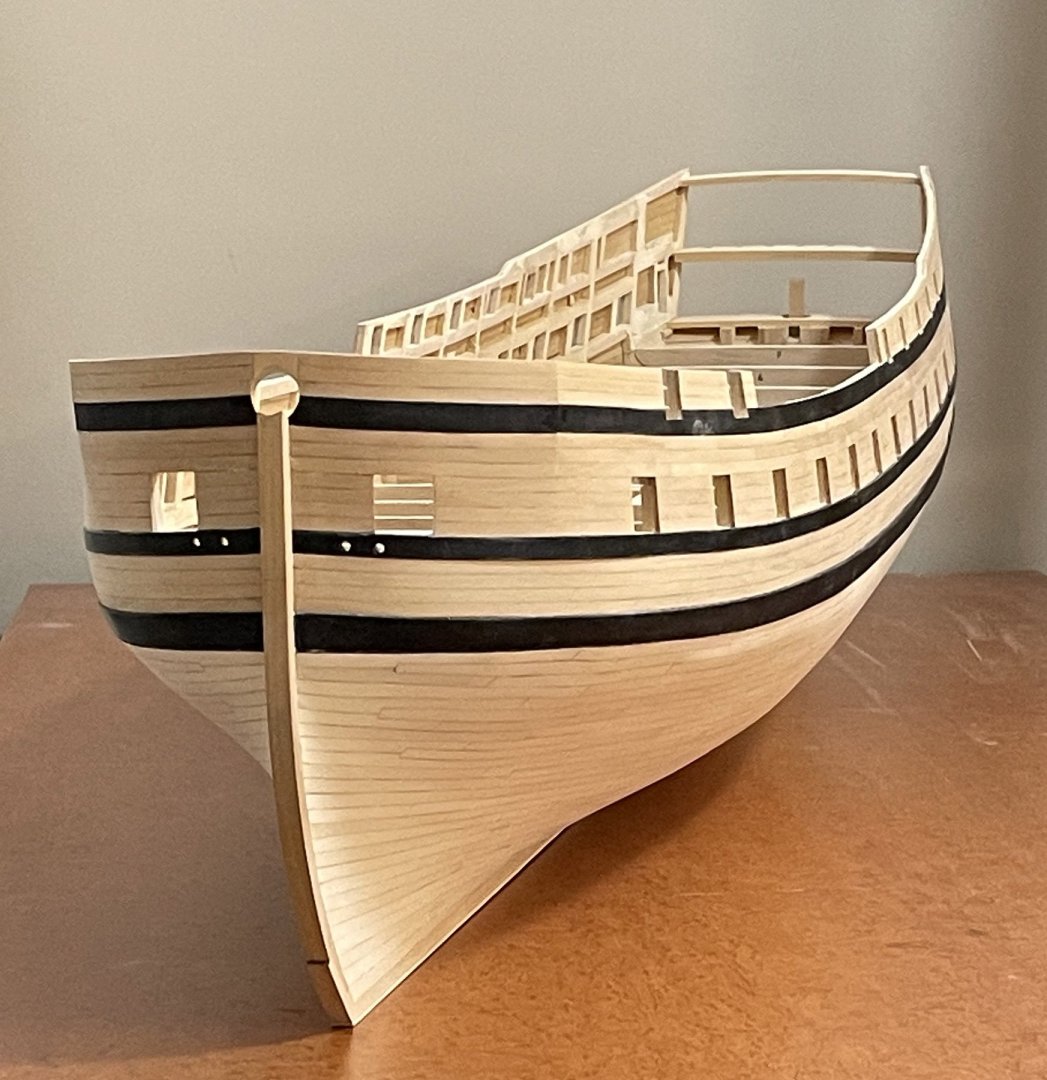-
Posts
13,289 -
Joined
-
Last visited
Content Type
Profiles
Forums
Gallery
Events
Everything posted by druxey
-

LE CENTAURE 1783 by Jeronimo
druxey replied to Jeronimo's topic in - Build logs for subjects built 1751 - 1800
Lovely work, despite a drafting error - that so easily can happen! -
The foot bars are called stretchers. Some are simply vertical pieces of plank that fit into slots on longitudinal pieces each side of the boat or between vertical struts.
-
That is a magnificent pond yacht that you have there! Would shoe eyelets be about the right size?
-
Finding a suitable sail in store was done using wooden tags attached. Examples if these tags still survive.
-

ancre La Belle 1684 by Oliver1973 - 1/36
druxey replied to Oliver1973's topic in - Build logs for subjects built 1501 - 1750
'Carving' rudder ironwork from solid brass is unusual. Labor intensive but well done! -
Up for auction, one of three known surviving Trafalgar Union Jacks: https://www.christies.com/en/stories/battle-of-trafalgar-union-jack-flag-from-the-hms-spartiate-c3f23cd0428d4528bef698ca3c1296f9?COSID=43841259&cid=DM532848&bid=502282194 Things to note are the coarse weave of flags back then: translucent in light, not opaque. This effect is seen in marine paintings. I originally thought that the paint had become transparent with age - not so! The proportions of the flags at this time were not standardized as today, particularly if sewn aboard. It can be yours, if you have deep pockets and large space to display it in.
-
I doubt if small vessels such as Speedwell or Wolf actually had painted friezes: just plain colored bands between the rails and moldings. Here is a contemporary model of Speedwell: https://www.rmg.co.uk/collections/objects/rmgc-object-66296?_gl=1*3fkusu*_up*MQ..*_ga*MzAxODE1MTc4LjE3NTAzMjQ2MDE.*_ga_7JJ3J5DBF6*czE3NTAzMjQ2MDAkbzEkZzAkdDE3NTAzMjQ2MDAkajYwJGwwJGgw*_ga_4MH5VEZTEK*czE3NTAzMjQ2MDAkbzEkZzAkdDE3NTAzMjQ2MDAkajYwJGwwJGgw This is more representative of mid eighteenth century ships.
-
To avoid wrinkling and ironing, stretch the Silkspan wet and tape it around the edges. When it dries, it shrinks a little, taking out any wrinkles. Then paint and cut the sails to shape.
-
So, Greg has been whispering into your ear, Clare. "Ssssspeedwell"! Your Wolf has turned out really nicely. I'm always surprised when paper models do not look like paper. Well done!
About us
Modelshipworld - Advancing Ship Modeling through Research
SSL Secured
Your security is important for us so this Website is SSL-Secured
NRG Mailing Address
Nautical Research Guild
237 South Lincoln Street
Westmont IL, 60559-1917
Model Ship World ® and the MSW logo are Registered Trademarks, and belong to the Nautical Research Guild (United States Patent and Trademark Office: No. 6,929,264 & No. 6,929,274, registered Dec. 20, 2022)
Helpful Links
About the NRG
If you enjoy building ship models that are historically accurate as well as beautiful, then The Nautical Research Guild (NRG) is just right for you.
The Guild is a non-profit educational organization whose mission is to “Advance Ship Modeling Through Research”. We provide support to our members in their efforts to raise the quality of their model ships.
The Nautical Research Guild has published our world-renowned quarterly magazine, The Nautical Research Journal, since 1955. The pages of the Journal are full of articles by accomplished ship modelers who show you how they create those exquisite details on their models, and by maritime historians who show you the correct details to build. The Journal is available in both print and digital editions. Go to the NRG web site (www.thenrg.org) to download a complimentary digital copy of the Journal. The NRG also publishes plan sets, books and compilations of back issues of the Journal and the former Ships in Scale and Model Ship Builder magazines.






